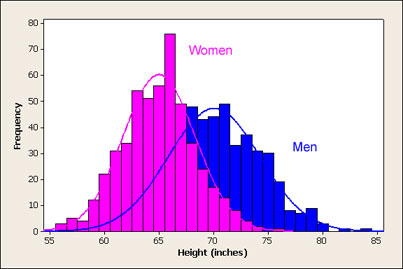The term black swan was originally used to describe something as impossible. Back then no-one had seen such a beast. Later when one was found in Australia the meaning changed. It was then used to characterise the thing that once thought impossible is now known to be true.
Taleb defines a Black Swan event as having three attributes:
First, it is an outlier, as it lies outside the realm of regular expectations, because nothing in the past can convincingly point to its possibility.
Second, it carries an extreme ‘impact’.
Third, in spite of its outlier status, human nature makes us concoct explanations for its occurrence after the fact, making it explainable and predictable.
So why is this important? The human nature bit can be explained by the Hindsight bias it is the underlying assumptions we make about probability that lead to a different perspective on the world.
Our intuitive understanding of probability is generally based on the normal distribution (aka. Gaussian distribution or Bell Curve). Let’s take the height of people as the example. We generally expect to see the height of people to cluster around some average.

The chances of seeing something a long way from the average drops very quickly (based on something called the standard deviation). In our example of height the chances of seeing someone who is 5x the average height is pretty much zero. You don’t need to see many people to make a good guess at the average. If the normal distribution where the only probability distribution out there in the real world then we could simply position any extreme event at the edge of the curve and relate the possibility of the event back to the average (which is easily to calculate from a few observations).
It is clear then, that the Black Swan events don’t follow a normal distribution. They have a distribution where the most commonly occurring events can be easily mistaken for the normal distribution, but where extreme events can occur much further away from the average. So this time let’s consider the size of meteorites. Unlike people meteorites don’t have an average size. They follow a power distribution. Taleb called them thick tail distributions (making a point long-tail wasn’t correct). It doesn’t take much imagination to put large meteorite strikes in the Black Swan category.

Taleb then went on to characterise the two opposing environments as Mediocristan and Extremistan. Mediocristan being the normal, bell curve and Extremistan being the world of Black Swans, power laws and thick tails. Read the book to get more on these.
A good example is to look at salaries vs. heights. Say we take 100 random people from the planets population and calculate an average height and average salary. If we find the tallest person in the world and bring them into the room, the average will go up a couple of percentage points at worst. If we then invite Bill Gates into the room we can see that the average salary will go ‘through the roof’. Height belongs to Mediocristan and salary to Extremistan.
So what does this mean for IT projects? Let’s consider a standard IT task. Now depending on your project management methodology you may call this a user story or some form of Kanban card, for the purpose of this exercise it really doesn’t matter.
The size of this unit of work is based on either an estimate (using a developer’s experience) or some historical data (burndown chart or cycle time) again it doesn’t matter which. This step makes the crucial assumption that the estimated time vs. the actual time will vary based on a normal distribution. We assume it is possible to calculate an average from a small number of previous examples of similar work.
However we’re not working with standard tasks. We’re not making the same widget time and time again. This is knowledge work. Now I’m sure there is some software development tasks that belong in Mediocristan, however my opinion is that these are exactly the kind of tasks you can automate or otherwise shift away from your development team.
So we’re very much living in Extremistan, and here we leave ourselves exposed to Black Swans. Averages don’t work. Impact on project timeline is massive. You can talk about continuous improvement, flow and incremental experiments but if the data you are using to drive these decisions is sitting there with a big thick tail of outliers then you’re doomed I’ve even seen people recommend the outliers are removed to get a better “fit” for the data.
So what does a Black Swan perspective on managing a project mean for some of the current best practice?
- Measures such as velocity will do a very poor job of predicting the future.
- Spending time in retrospectives on the cause of Black Swans is largely a waste of effort (making something that is random explainable and predictable is human nature).
- Games that illustrate how Scrum/Kanban work using a simple Mediocristan example only help fool us further (packing envelopes or making coffee etc.).
The impact of this insight I will explore further in future posts but for now I’ll leave you with the words of Tom DeMarco
Consistency and predictability are still desirable, but they haven’t ever been the most important things. For the past 40 years, for example, we’ve tortured ourselves over our inability to finish a software project on time and on budget. But as I hinted earlier, this never should have been the supreme goal. The more important goal is transformation, creating software that changes the world or that transforms a company or how it does business.







Pingback: Antifragility: A User’s Manual | gothandy